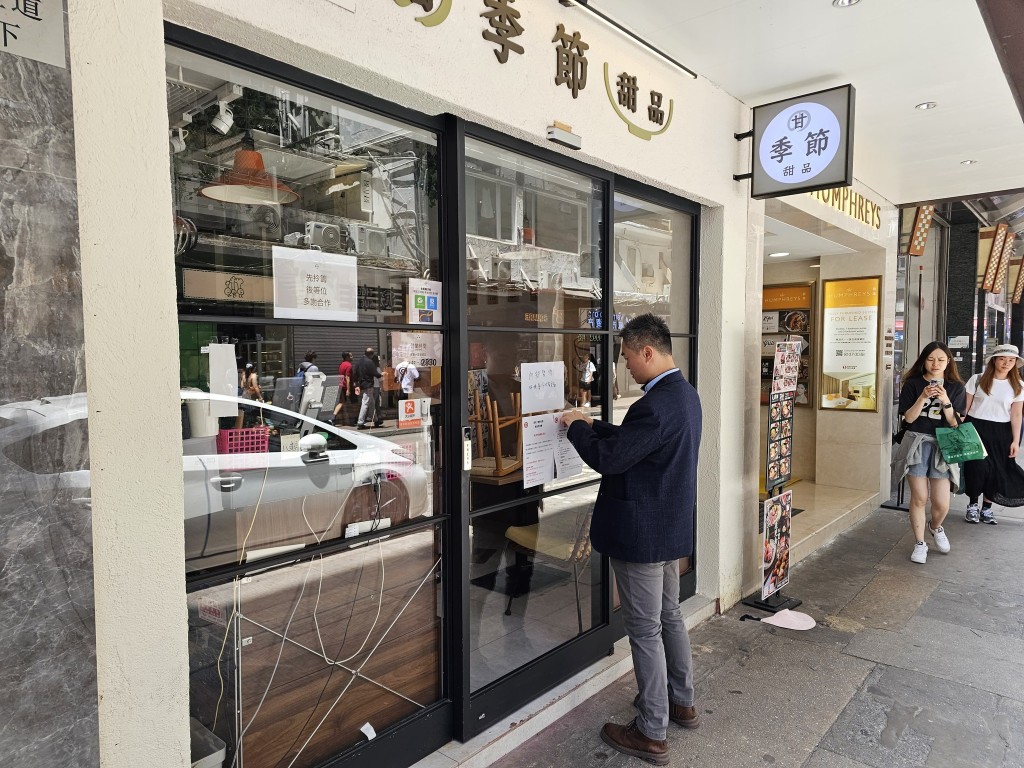02/06-09/06 [Eng] Hong Kong HR Trends & Workplace Insights – Weekly HR Newsletter 每週人力資源新聞速覽
The future of work is arriving faster than anyone expected.
In this week’s MixCare Weekly, we explore five high-impact developments shaping the HR agenda—from China’s breakthrough in non-binary AI chip production to the rising anxiety of Gen Z graduates facing a job market reshaped by automation. We also look at Hong Kong’s emerging role as a hub for AI talent and global education, and hear direct warnings from Anthropic’s CEO about the white-collar disruption on the horizon.
If you’re leading a team, planning your next hire, or building your 2026 workforce roadmap—these are the stories you can’t afford to ignore.
1.Hong Kong Faces 180,000 Talent Gap by 2028: Lawmakers Call for Dedicated Population Policy Unit

One Minute Summary
A new manpower projection report from the Hong Kong government forecasts a talent shortfall of 180,000 people by 2028, spanning high-end talent, mid-level technicians, and frontline workers. Lawmakers are urging the creation of a high-level dedicated body to oversee population and workforce planning across short, medium, and long terms. Recommendations include boosting the birth rate, expanding childcare services, increasing women’s labour participation, and improving access to fertility support. While the government claims current cross-department mechanisms are sufficient, lawmakers insist deeper structural planning is needed to avoid systemic shortages.
3 Main Takeaways
- Hong Kong is projected to face a shortfall of 180,000 workers by 2028, including 45,000–55,000 in construction and 23,000 in tech.
- Lawmakers propose creating a top-level policy unit focused on population and labour planning, with emphasis on women’s workforce participation.
- The government defends existing mechanisms, but pressure is mounting to centralize planning and elevate population policy in governance.
Implications to HR
- Embed macro talent trends into strategic workforce planning – HR leaders must go beyond internal headcount planning to incorporate citywide forecasts into workforce strategy.
- Be a driver of gender and family policy design – Use internal data and DEI initiatives to advocate for flexible work, on-site care, and pathways for women returners.
- Lead the dialogue between sectors – HR should bridge employers, government, and educators to build labour solutions that match demographic realities.
What this means for you:
Talent shortages are no longer department-level headaches—they’re a structural threat. HR must shift from reactive hiring to population-aware planning. You’re not just filling roles—you’re co-shaping the city’s economic future.
Source: Sing Tao Daily
2. AI Disrupts Entry-Level Careers Before Graduation
One Minute Summary
A growing number of graduates are rethinking their career paths before entering the workforce, as AI tools rapidly displace entry-level jobs. According to a UK survey, 11% of students have changed their career direction due to AI. Translation, programming, creative work, and legal support roles are most affected. In the US, unemployment among recent graduates has risen to 5.8%, the highest in years. Some companies now use AI to perform tasks that once required full junior teams. Recruiters report a marked shift toward hiring only mid-to-senior level candidates, shutting out new entrants.
3 Main Takeaways
- AI is directly replacing junior white-collar roles, from translation to coding.
- Hiring thresholds have increased, with companies preferring experienced hires or AI-enabled task handling.
- Students are already adapting, shifting career goals before graduation.
Implications to HR
- Rebuild early-career pipelines with a hybrid model – Internships and graduate programs should integrate AI tools to teach augmentation, not competition.
- Create ‘AI-apprenticeship’ roles – Entry-level jobs must evolve into learning ecosystems, pairing junior staff with AI systems to produce higher output with mentorship.
- Develop internal retraining tracks for misaligned degrees – Offer bridge programs for candidates from displaced disciplines to enter adjacent, AI-resilient functions.
What this means for you:
Entry-level hiring is no longer about filling junior roles—it’s about building AI-augmented capability from day one. HR must rethink what it means to start a career and embed tech literacy as a core part of the employee lifecycle.
Source: Yahoo Finance HK
3. Anthropic CEO Warns: AI Could Eliminate 50% of Entry-Level White-Collar Jobs in 5 Years

One Minute Summary
Anthropic CEO Dario Amodei has issued a stark warning: AI could replace half of all entry-level white-collar jobs within 5 years, affecting sectors like finance, legal, consulting, and tech. He predicts unemployment could rise to 10–20% unless policies evolve. Amodei also criticized governments and CEOs for downplaying the threat and proposed new taxation models and national retraining initiatives to offset mass displacement. His remarks coincide with the launch of Anthropic’s Claude 4 model, capable of sustained, high-level programming—underscoring the urgency of intervention.
3 Main Takeaways
- Up to 50% of entry-level jobs may disappear within 5 years due to AI automation.
- The most vulnerable industries include finance, legal, and tech.
- Leadership is failing to acknowledge or prepare for the scale of disruption.
Implications to HR
- Scenario-plan for AI-driven headcount disruption – Build forecasts that model impact by department and job level over time.
- Advocate for policy and retraining partnerships – Collaborate with academia, governments, and tech firms to co-develop next-gen talent pools.
- Shift L&D focus to systems thinking, collaboration, and ethics – Cultivate traits AI can’t replicate, like judgment, adaptability, and human trust-building.
What this means for you:
This is not just another HR cycle—it’s a workforce reset. Act now to reposition your entry-level strategy, or risk facing mass talent misalignment and reputational backlash. Proactive HR leaders will become the architects of organizational survival.
Source: HK01
4. RedNote Enters AI Race with Open-Source LLM

One Minute Summary
Chinese social media platform RedNote (Xiaohongshu) has launched an open-source large language model, dots.llm1, to compete with Alibaba and DeepSeek. Designed for efficiency, the model activates only a fraction of its 142B parameters at a time. RedNote’s in-house AI lab emphasises human-centric design and transparency, using high-quality, non-synthetic data and releasing training checkpoints for public review. The company also opened its first overseas office in Hong Kong as part of its international expansion.
3 Main Takeaways
- RedNote’s model uses a ‘mixture of experts’ design to boost performance while cutting costs.
- Transparency is central, with public release of training checkpoints.
- Its new Hong Kong office signals a strategic global pivot.
Implications to HR
- Reframe tech hiring around open-source collaboration – Redefine roles to reward contributors with community building, transparency, and research alignment.
- Develop AI research pipelines in-house – Use RedNote as a case study to build internal labs that blend product teams with academic partners.
- Position HK offices as regional innovation hubs – Attract global AI talent by connecting local teams to international R&D visibility.
What this means for you:
AI capability is no longer limited to Big Tech. Even lifestyle platforms can lead with open-source innovation. For HR, this is a reminder that AI talent must be nurtured cross-functionally, not just in the engineering silo.
Source: South China Morning Post
5. King Parrot Group Abruptly Closes; Over 100 Employees Left in Limbo

One Minute Summary
King Parrot Group, a well-known F&B operator in Hong Kong, abruptly shut down nine outlets last week, leaving over 100 employees unpaid and unclear about their employment status. Staff were reportedly handed cheques and told not to return. At least 50 formal complaints have been filed, and unions are supporting workers in recovering severance and holiday pay. Some employees arrived at work only to find their restaurants boarded up. Industry leaders point to the ongoing post-pandemic struggles in Hong Kong’s food and beverage sector as a contributing factor to the closure.
3 Main Takeaways
- More than 100 employees abruptly dismissed, with unpaid wages and unresolved severance claims.
- The F&B sector remains unstable, with slow recovery, reduced local spending, and rising operational costs.
- Legal and labour protections are being tested, as unions call for formal insolvency declarations to aid affected staff.
Implications to HR
- Build crisis response protocols into HR operations – Companies should pre-plan structured offboarding, including wage payout flows and communication sequences.
- Ensure legal compliance readiness – HR must be trained in handling mass terminations, coordinating with unions, and navigating the Labour Department process.
- Support emotional and career recovery post-closure – Prepare redeployment services, counselling access, and job-matching partnerships in the event of sudden closures.
What this means for you:
Even high-visibility brands aren’t immune to operational collapse. HR should act now to formalise closure protocols, protect employee dignity, and insulate the business from reputational damage during crises.
Source: The Standard
📰 Tech in Focus: A Smarter Way to Harness AI for Your Business
As companies navigate a fast-evolving digital landscape, leveraging AI effectively is key to staying ahead. Employees and customers alike expect smarter, more personalized solutions that adapt to their needs in real time.
That’s where MixCare’s AI-Powered Insights Platform comes in.
Empower your teams with cutting-edge AI tools that streamline workflows, deliver actionable insights, and enhance decision-making. From predictive analytics to personalized customer experiences, MixCare’s platform tailors AI solutions to fit your unique business goals.


[formidable id=”9″]

